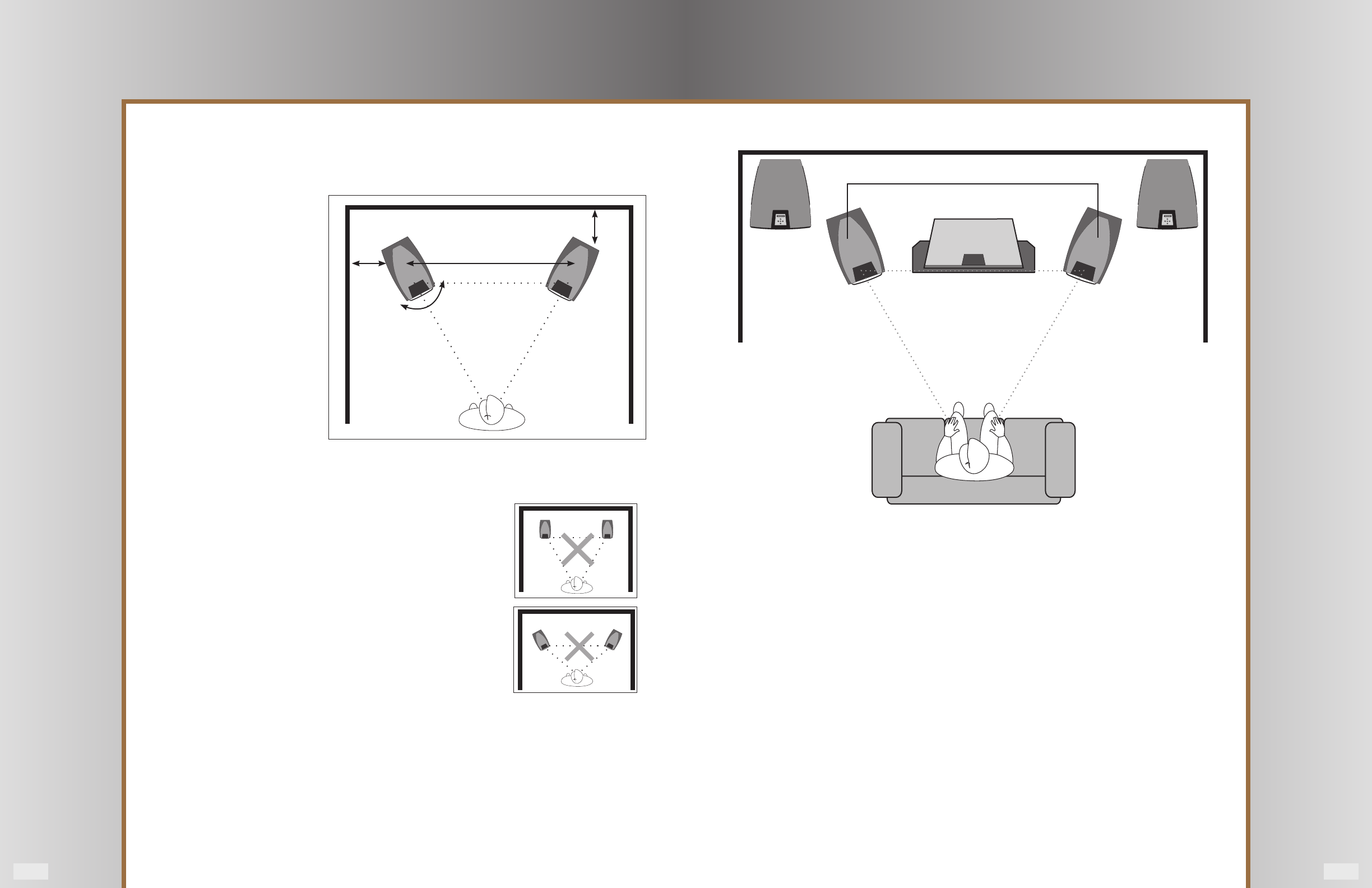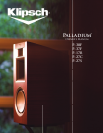
Page 6 Page 7
Positioning Loudspeakers - Home TheaterPositioning Loudspeakers - Stereo
Never allow objects of furniture to impede the loudspeaker or place objects between the loudspeakers and
the listening position.
Stereo Positioning
(P-38F / P-37F / P-17B)
The generally accepted norm is that
the loudspeakers should be as far
away from each other as they are
from the listener. This places the
listener and the loudspeakers at the
points of an equilateral triangle.
Well-designed horn loudspeakers
have “controlled directivity” - the dis-
persion pattern is tailored to provide
the ideal image at the listener’s ear.
This is in contrast to conventional
speakers, where the sound tends to
re o in all directions.
It follows that, when correctly sited, the performance of a well designed horn loudspeaker signicantly exceeds
that of conventional “direct radiator” loudspeakers.
Because the bass drivers are in a tuned port enclosure, the loudspeakers
must be operated away from walls and, specically, corners. The distances
in the above diagram should be considered as minimum distances. Placing
them too close to the walls will cause the bass to become bloated, muddy and
indistinct.
The angle at which the loudspeakers are placed relative to the rear wall is
called “toe-in”. Placing the loudspeakers with their backs parallel to the wall
will result in a poor stereo image with the so called ”hole in the wall” eect.
Angling the speakers inwardly too much will restrict the width of the listening
seat and also tend to narrow the stereo image.
In smaller rooms, it is better to place the loudspeakers more closely together
and set them relatively further back. This is preferable to placing the loud-
speakers further apart and sitting too close - the stereo eect will be signicantly degraded if you do.
The height of the loudspeaker is important. The midrange should appear to radiate from a point level with
the ears of a seated listener. As these loudspeakers are large, they will sound their best in large rooms, though
there are some adjustments that can be made to redress the position in smaller rooms. These will be discussed
in the section on nal positioning.
The above are our recommendations. Be prepared to experiment until the sound is exactly as you want!
6’ - 16’
LFE 2 LFE 1
CENTER
The same general positioning rules as for stereo apply but these are some variations.
• The loudspeakers can be placed closer together. Remember that the closer the speakers are to one another,
the less spacious the sound will be in stereo.
• The “toe-in” can be lessened. This will broaden the sound image for more than one listener, but the pinpoint
localization of the speakers will be lessened.
• The fronts of the speakers should be in line with the screen and with the front of the center loudspeaker as
far as possible. Placing the TV screen on the wall (and center channel directly above or below) with the main
loudspeakers protruding signicantly is not ideal.
• The TV should be placed centrally between the loudspeakers.
The above are our recommendations. Be prepared to experiment until the sound is exactly as you want!
General Observations
• When conguring the bass management parameters of your surround processor, the P-38F, P-37F and P-17B
models can be set to “large”. In cases where the processor has the ability to select the crossover frequency to
a lower setting you may nd improved performance by selecting “small” and then setting a crossover fre-
quency in the range of 40-60Hz.
• If your processor oers the ability for separate crossover settings for stereo and you are using a subwoofer,
the subwoofer crossover frequency should be set so that it covers only the lowest octaves. Select a frequency
in the range of 60-70Hz.
L
R
(30 cm)
8’ - 16’
>12”
>8”
5
º
- 40
º
(2.4 m - 4.9 m)
(20 cm)
(1.8 m - 4.9 m)













